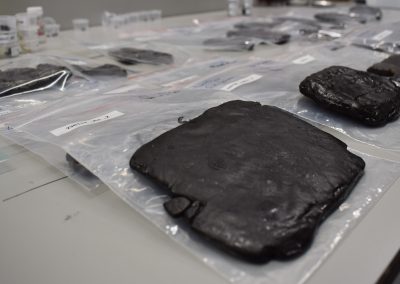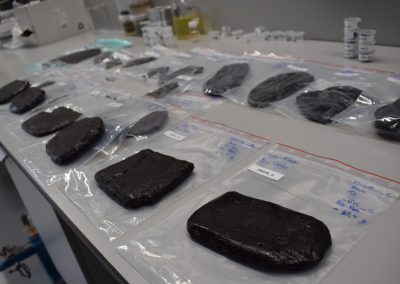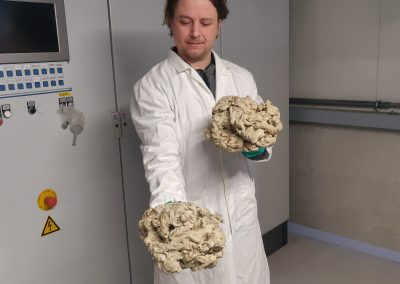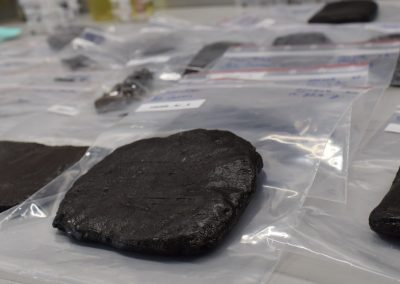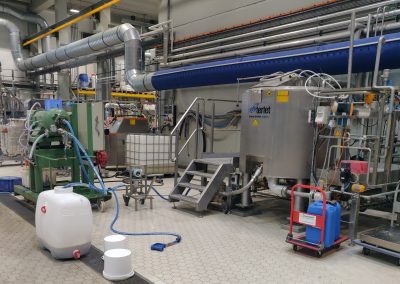Genetische verschillen
Zoals binnen de meeste plantensoorten zijn er ook binnen de paardenbloemen veel genetische verschillen. Dit betekent dat er nog volop ruimte is voor veredeling: het selecteren van planten met de beste erfelijke eigenschappen voor het doel waarvoor we de plant willen inzetten en deze vervolgens met elkaar kruisen. Veel paardenbloemen hebben geen rubbergenen en zijn daarom in beginsel ongeschikt voor rubberproductie. Maar als deze in beginsel ongeschikte paardenbloemen hele grote wortels hebben, is het wel interessant om ze te kruisen met een plant die wél rubbergenen heeft om te proberen zo tot een variëteit te komen die hele grote, rubber bevattende wortels heeft.
Rubber uit paardenbloemen
Voor het veredelingsonderzoek maakt Lion-Flex gebruik van de onderzoeksfaciliteiten van KeyGene en Barenbrug. In Wolfheze heeft Barenbrug een uitgebreid research centrum met laboratorium. Daar worden selecties en kruisingen uitgevoerd en proeven gedaan naar opbrengstpotentieel, wortelaandeel, bemestingsbehoefte, aandeel latex in de wortel, droogtegevoeligheid, enzovoort. Zo ontwikkelt Lion-Flex variëteiten die onder alle omstandigheden een hoog en voorspelbaar resultaat moeten geven.
Het doel van de veredeling van paardenbloemen is om te komen tot een plant die:
- 15% latex in de wortel bevat
- Een hoge wortelopbrengst realiseert
- Uniform is
- Snel groeit en robuust is
Om te komen tot een commercieel interessante productie van natuurrubber richt het onderzoek zich op de volgende facetten:

Zaadwinning
Eén paardenbloemplant brengt tien bloemen per seizoen voort. Uit elke bloem komen 150 tot 200 zaden. In potentie kunnen er vijftienhonderd zaden uit één paardenbloemplant gewonnen worden. Het winnen van zaden en het productierijp maken daarvan is een belangrijke stap om op langere termijn paardenbloemen te telen voor de productieketen van natuurrubber.

Extractieproces
Een belangrijke stap in de winning van rubber uit wortels van paardenbloemen, is de ontwikkeling van het extractieproces. Een kleinschalig prototype voor bioraffinage wordt momenteel getest. Vervolgens gaat Lion-Flex met dit prototype de procesparameters en -condities optimaliseren om zo de opbrengst en kwaliteit te maximaliseren.

Teelt
Om de teelt van paardenbloemen concurrerend te maken met de teelt van de Braziliaanse rubberboom moet er minimaal 750 kg rubber per hectare gewonnen worden. Het onderzoek richt zich op het optimaliseren van het teeltproces en het realiseren van een consistente rubberopbrengst per hectare.

Opschaling & Validatie
Tot slot schalen we de ontwikkelde technieken op voor de technische en economische validatie. Het uiteindelijke doel is te komen tot een duurzame en concurrerende productieketen voor natuurrubber.
Ook inuline
Paardenbloemen bevatten naast latex ook relatief veel inuline. Dit is een koolhydraat dat in de voedingsindustrie wordt ingezet als vervanger van suiker. Lion-Flex wil ook deze stof uit de wortels extraheren en hiervoor een duurzame productieketen ontwikkelen.


